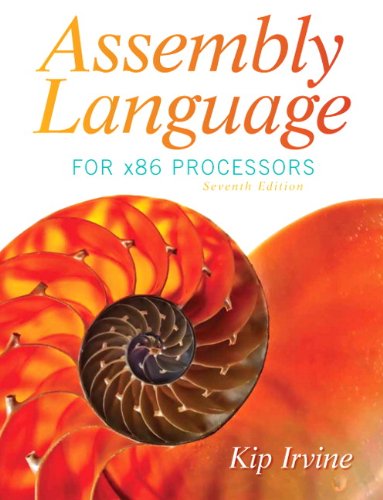We spent many hours on research to finding assembly programming x86, reading product features, product specifications for this guide. For those of you who wish to the best assembly programming x86, you should not miss this article. assembly programming x86 coming in a variety of types but also different price range. The following is the top 3 assembly programming x86 by our suggestions:
Reviews
1. Assembly Language for x86 Processors (7th Edition)
Description
Assembly Language for x86 Processors, 7e is intended for use in undergraduate courses in assembly language programming and introductory courses in computer systems and computer architecture. This title is also suitable for embedded systems programmers and engineers, communication specialists, game programmers, and graphics programmers. Proficiency in one other programming language, preferably Java, C, or C++, is recommended.
Written specifically for 32- and 64-bit Intel/Windows platform, this complete and fullyupdated study of assembly language teaches students to write and debug programs at the machine level. This text simplifies and demystifies concepts that students need to grasp before they can go on to more advanced computer architecture and operating systems courses. Students put theory into practice through writing software at the machine level, creating a memorable experience that gives them the confidence to work in any OS/machine-oriented environment.
Additional learning and teaching tools are available on the authors web site athttp://asmirvine.com/where both instructors and students can accesschapter objectives, debugging tools, supplemental files, a Getting Started with MASM and Visual Studio 2012 tutorial, and more.
Teaching and Learning Experience
This program presents a better teaching and learning experiencefor you and your students. It will help:
- Teach Effective Design Techniques: Top-down program design demonstration and explanation allows studentsto apply techniques to multiple programming courses.
- Put Theory into Practice: Students will write software at the machine level, preparing them to work in any OS/machine-oriented environment.
- Tailor the Text to Fit your Course: Instructors can cover optional chapter topics in varying order and depth.
- Support Instructors and Students: Visit the author's web site http://asmirvine.com/ for chapter objectives, debugging tools, supplemental files, a Getting Started with MASM and Visual Studio 2012 tutorial, and more.
2. Assembly Language for x86 Processors (6th Edition)
Description
Assembly Language for x86 Processors, 6/e is ideal for undergraduate courses in assembly language programming and introductory courses in computer systems and computer architecture.
Written specifically for the Intel/Windows/DOS platform, this complete and fully updated study of assembly language teaches students to write and debug programs at the machine level. Based on the Intel processor family, the text simplifies and demystifies concepts that students need to grasp before they can go on to more advanced computer architecture and operating systems courses. Students put theory into practice through writing software at the machine level, creating a memorable experience that gives them the confidence to work in any OS/machine-oriented environment. Proficiency in one other programming language, preferably Java, C, or C++, is recommended.
3. x86 Disassembly: Exploring the relationship between C, x86 Assembly, and Machine Code


